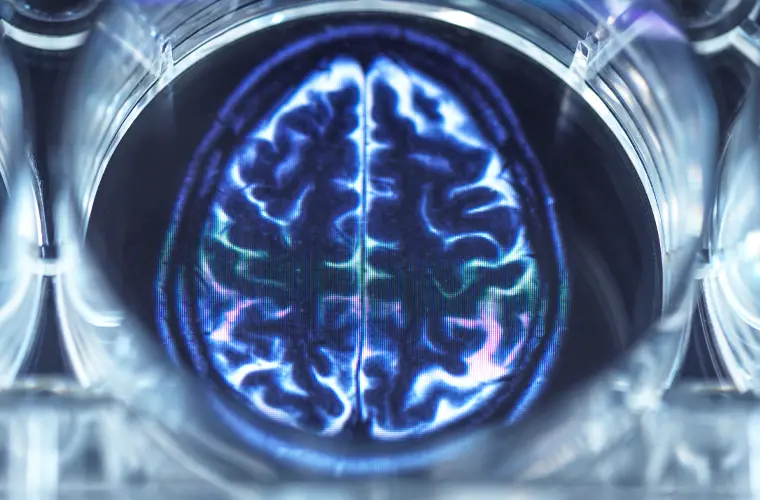A recent study has brought to light astonishing findings regarding “hidden consciousness,” which challenges long-held perceptions about unresponsive patients with severe brain injuries.
Published in the New England Journal of Medicine, research by an international team led by experts from Mass General Brigham and Harvard Medical School reveals brain activity shows that up to 25% of unresponsive patients may possess a form of “hidden consciousness.”
Hidden consciousness, formally termed cognitive motor dissociation (CMD), describes a state where a patient’s cognitive abilities, such as understanding language and following commands, are intact but are not outwardly observable due to severe motor impairment.
These findings have profound implications for patient care, medical ethics, and our understanding of consciousness itself.
“Patients with brain injury who are unresponsive to commands may perform cognitive tasks that are detected on functional magnetic resonance imaging (fMRI) and electroencephalography (EEG),” researchers wrote. “This phenomenon, known as cognitive motor dissociation, has not been systematically studied in a large cohort of persons with disorders of consciousness.”
The study involved 353 adult participants across six academic medical centers in the United States, the United Kingdom, and Europe. Of these, 241 individuals were classified as unresponsive and unable to show visible signs of consciousness when given simple commands.
However, using advanced neuroimaging techniques like functional MRI (fMRI) and electroencephalography (EEG), researchers identified that approximately 25% of these unresponsive patients exhibited brain activity consistent with following commands, such as imagining opening and closing their hands.
These findings significantly expand on previous studies, suggesting that only 15% to 20% of such patients might exhibit hidden consciousness.
According to researchers, CMD occurs when cognitive abilities outstrip motor capabilities, rendering patients unable to respond even though they are processing information and following instructions internally.
The discovery of CMD in 25% of unresponsive patients brings to the forefront critical ethical questions regarding the treatment and care of individuals with severe brain injuries.
The study’s findings suggest that these patients might have been prematurely classified as vegetative or minimally conscious, which could have influenced decisions regarding life-sustaining treatments or the withdrawal of care.
Dr. Jan Claassen, an associate professor of neurology at Columbia University and study co-author, emphasized the importance of reassessing how healthcare professionals interact with patients diagnosed with disorders of consciousness.
“The study confirms that a large number of patients who appear behaviorally unresponsive are conscious and unable to express this. ,” Dr. Claassen said in a press release by Columbia University. “We have an obligation to try to reach out to these patients and build communication bridges with them. Having this information gives us the background we need to develop interventions to help them recover.”
Once hidden consciousness is identified, medical staff and caregivers may want to take a more engaged approach to interacting with unresponsive patients. The implications extend beyond clinical care, as understanding that a patient is conscious could lead to improved emotional and psychological support from families, who might otherwise have been unaware of their loved one’s cognitive state.
“Families have told us that once a positive test result revealing cognitive motor dissociation is shared with the patients’ clinical team, it can change the way that the team interacts with their loved one,” lead study author Dr. Yelena Bodien said. “Suddenly, the team is paying more attention to subtle behavioral signs that could be under volitional control, or speaking to the patient, or playing music in the room.”
Moreover, identifying CMD in patients underscores the need for broader availability of advanced diagnostic tools. As the study notes, the detection of CMD currently depends on sophisticated neuroimaging techniques that are not universally accessible.
This highlights the necessity for standardizing and expanding the use of these technologies to ensure that all patients can be accurately assessed.
Underscoring the significance of these findings, in a recent interview with Columbia Magazine, Dr. Claassen shared a transformative experience that inspired him to dedicate his career to helping those who are unresponsive due to severe brain injuries.
“I’ll never forget the first time I saw a patient who’d appeared to be lost forever wake up,” Dr. Claassen confided. “One day, he was completely unresponsive, and the next time I saw him, he was sitting at a table playing cards. There was something about that transformation that left me awestruck.”
“I knew I had to devote my life to helping these people. And I had to learn everything possible about what their experiences revealed about human consciousness — what it is, why it breaks down, and how it can arise again.”
The revelation that a significant portion of unresponsive patients may have hidden consciousness opens the door to potential new therapies and interventions.
Researchers say these recent findings could advance the development of brain-computer interfaces, enabling unresponsive patients to communicate with the outside world.
Technologies that enable communication through thought alone are currently in development. Additionally, private companies like Neuralink are making significant strides in brain-computer interface technologies, which have the potential to enhance both neural capabilities and overall brain function.
Another promising technology, BrainGate, is focused on creating a brain-computer interface specifically designed to restore communication abilities in patients affected by neurological diseases or injuries. The BrainGate2 Neural Interface System is currently in clinical trials, targeting patients who have lost the use of both hands due to severe injury or disease.
Such innovations could radically transform the quality of life for individuals with severe brain injuries, allowing them to express their thoughts, needs, and emotions despite their inability to move or speak.
Ultimately, the discovery of hidden consciousness in up to a quarter of unresponsive patients is a call to rethink how we perceive, diagnose, and interact with individuals who have suffered severe brain injuries. These groundbreaking findings may shape the future of patient care, medical ethics, and neuroscience.
Currently, there are no standardized professional guidelines for assessing cognitive motor dissociation, and most medical centers cannot conduct this testing. Researchers emphasize that translating these findings into clinical practice should be a key focus of future research efforts.
However, the study authors hope that their work will spur further research and lead to more sophisticated and accessible CMD detection methods.
“To continue our progress in this field, we need to validate our tools and to develop approaches for systematically and pragmatically assessing unresponsive patients so that the testing is more accessible,” Dr. Bodien stressed. “The Emerging Consciousness Program at Mass General Hospital offers these evaluations clinically, however, elsewhere, a patient may have to enroll in a research study to get tested.”
“We know that cognitive motor dissociation is not uncommon, but resources and infrastructure are required to optimize detection of this condition and provide adequate support to patients and their families.”
Tim McMillan is a retired law enforcement executive, investigative reporter and co-founder of The Debrief. His writing typically focuses on defense, national security, the Intelligence Community and topics related to psychology. You can follow Tim on Twitter: @LtTimMcMillan. Tim can be reached by email: tim@thedebrief.org or through encrypted email: LtTimMcMillan@protonmail.com

